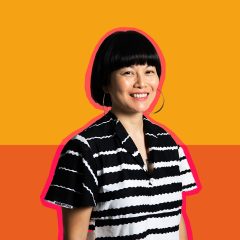“This is more about the history of America than anything else,” says Jeff Yang, curator of Marvels and Monsters, gesturing to the roomful of garish, pulpy comic book imagery. After spending time in the exhibition at Asian Arts Initiative this much is clear — fear and anxiety often prevail as a cultural force. We constantly project our insecurities into mass culture, scapegoating one group or another as the mysterious other.
Marvels and Monsters: Unmasking Asian Images in U.S. Comics showcases what is possibly the world’s largest and only collection of Asian portrayals in comic books. Gathered by science fiction author and cultural studies scholar William F. Wu and curated by journalist Jeff Yang (who also co-curated this exhibition with D. Daniel Kim), the collection is housed in the NYU Fales Library & Special Collections and was donated with the help of the A/P/A Institute. Spanning the years 1942 to 1986, the Wu collection highlights the trajectory of xenophobic stereotypes of Asians into the mainstream American culture via comic books, once one of the most widespread forms of entertainment and cultural influence on young minds. Marvels and Monsters was shown at the Fales Library in 2011.
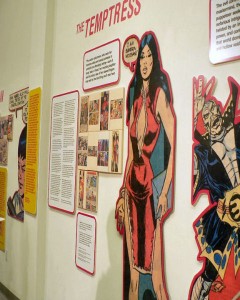
With the end of America’s Asian wars and the rise of Asian immigration into the country, the ugly typecasting of Asians in comics waned. But many of the images calcified into ideas that continue to surface from time to time. Some, like “The Kamikaze,” were more intrinsically tied to World War II, but others, like “The Temptress,” are all too familiar to anyone who’s watched a Tarantino film.
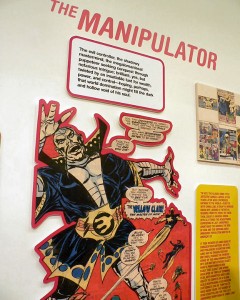
This is an exhibition that thrives on both reaction and nuance. As starkly derogatory as most of the images are, the curators took care to include positive portrayals such as Wing (the DC Comics sidekick and valet to the Crimson Avenger notable for a characterization of bravery and social conscience).
Both a large section of the exhibition and the talk I attended by curator Yang focused heavily on positive changes in the comics industry and the ability of artists to not only dismantle negative stereotypes, but play with them for their own purposes. The talk included a review of the history of Asians working in the comics industry in which Yang tied the rise of a fresh young cadre of Asian-American artists to the emergence of comics as a positive cultural force.
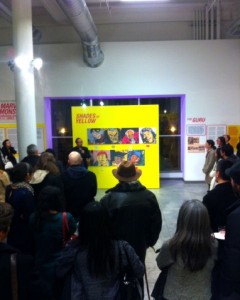
The exhibition is heavily interactive; in addition to life-size cutouts and a “Shades of Yellow” display that shows the garish Pantone colors used for Asian skin tones in comics, there is a “talk-back” wall and a book cart stocked with the work of recent Asian-American creators. People’s feedback ranged from disgust at the bigotry that was once par for the course in comics to beaming acknowledgment of how far we have come vis-à-vis tolerance. Looking at the crowd around me at the talk, I saw that the mood seemed balanced between bemusement and shock. I was unfamiliar with several of the archetypes, and with comics in general, but recognized that many of the depicted stereotypes have inundated mainstream movies, books and TV shows. It is impossible to leave the show without some sort of new awareness.
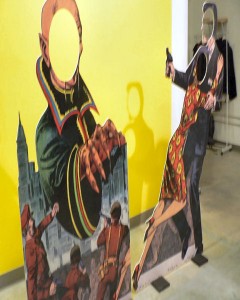
Combining visual arts practice with storytelling, the exhibit allows people to literally step back and take in what is admittedly only a sample of Wu’s collection, but is still considerable in scope. Larry Hama, a veteran comics artist and one of the many sources cited in the text accompanying the displays, describes the comics industry as a remarkably accepting community — the creators are known for their trailblazing in breaking ethnic and racial stereotypes, and there is ample room for creators such as Jim Cheung (best known for his work on the Marvel series New Avengers and the Crossgen series Scion) to flourish and influence up-and coming artists. The challenge is to reconcile his account of the comics industry with the images of ignorance and fear that were once ubiquitous.
And check out the programs scheduled around the exhibition on the AAI website, including these two:
Round Table Panel Discussion: Thursday Mar 1, 6-8pm (FREE)
Family Style Open Mic featuring Larry Hama, Friday Feb. 17, 7:30-9:30pm Admission: $5-10 Sliding Scale





